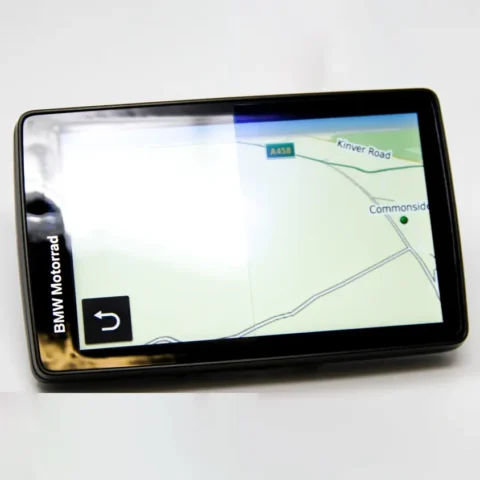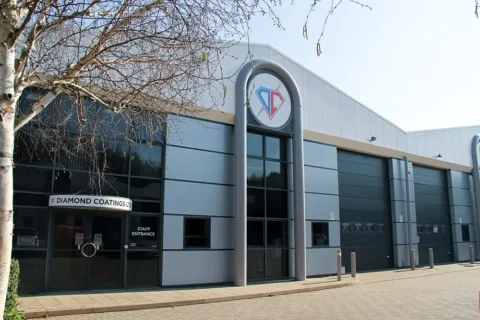
Enhance Your Garmin Nav 6 with AR Film
We’ve taken our expertise and applied it directly to your journey, developing an Anti-Reflective Film for the Garmin Nav 6
For orders placed online please contact us for an accurate shipping quote, sorry for any inconvenience.
All orders placed between December 20th and January 2nd will be processed on January 3rd

Outdoor Touch Screen Displays: Conquering the Elements for Seamless Interaction
Collectively, we have become increasingly reliant on instant information and self-service, and touch screen displays have provided this need. From checking into a flight at an airport kiosk to ordering food at a drive-thru, these interactive panels streamline countless daily tasks.
But while indoor touchscreens are a solved problem for the most part, taking that same intuitive functionality outside presents a formidable set of challenges. An outdoor touch screen display isn’t just an indoor screen placed outside; it’s a specially engineered solution designed to withstand and perform flawlessly against nature’s toughest assaults.
At Diamond Coatings, we understand the intricate demands of outdoor display technology. Our expertise in advanced coatings, particularly Indium Tin Oxide (ITO), is central to creating touch screens that not only survive but thrive in the harshest external environments, delivering reliable interaction day after day.
The Unforgiving Outdoor Environment
Consider for a moment the typical conditions an outdoor display must endure:
Meeting these challenges requires a different approach, where the touch technology itself plays a critical role.
Historically, the choice for outdoor touch screens often came down to resistive touch. These screens operate by detecting physical pressure, where two conductive layers (often ITO-coated plastic films) are pressed together. They can be operated with a gloved hand, a stylus, or even blunt objects, making them robust and less susceptible to interference from rain or dirt. This seemed like a natural fit for demanding outdoor conditions.
However, advancements in capacitive touch technology, coupled with innovations in display protection, have dramatically shifted the landscape. Capacitive screens, like those on your smartphone, rely on sensing the electrical charge of your finger (or other conductive objects) interacting with a transparent ITO-coated surface.
They offer a superior user experience with multi-touch gestures, fluid swiping, and higher optical clarity. The challenge was making them durable enough for outdoor use.
Today, the decision between capacitive and resistive for an outdoor touch screen display is nuanced, heavily influenced by the application’s specific needs:
Capacitive Advantages Outdoors:
Resistive Advantages Outdoors:
Diamond Coatings outdoor touch screen displays
At Diamond Coatings, our extensive experience in advanced optical and electrical coatings is fundamental to delivering high-performance outdoor touch screen displays. Whether it’s enhancing the core functionality of capacitive touch screens with precision ITO coatings on glass or ensuring the durability and clarity of resistive screens through our work with ITO on plastic films, we provide the underlying technology that makes these robust displays possible.
Our capabilities extend to manufacturing both resistive and capacitive touch screen displays up to generous sizes, such as 1000mm x 1000mm. We understand that merely applying a coating isn’t enough; it’s about integrating that coating into a comprehensive solution that considers:
Choosing the right outdoor touch screen display is a critical decision that impacts user satisfaction, operational efficiency, and long-term reliability. It’s not a one-size-fits-all scenario. By partnering with Diamond Coatings, you gain access to decades of expertise in transparent conductive coatings and display integration.
Our technical team is ready to consult on your specific environmental challenges, usage requirements, and performance expectations to ensure your outdoor interactive solution not only functions flawlessly but also delivers an exceptional user experience, no matter what the weather throws at it.

We’ve taken our expertise and applied it directly to your journey, developing an Anti-Reflective Film for the Garmin Nav 6

At Diamond Coatings, we provide the foundational transparent conductive coatings that are absolutely essential for capacitive switches

An ITO company fundamentally deals with the precise deposition of Indium Tin Oxide onto various substrates

Glass offers transparency and clear views. But what if it could also conduct electricity, integrating power and data directly into a transparent surface?
If you are interested in any of our products or services, please use the contact form or give us a call, we will be happy to discuss how we may be able to help you.